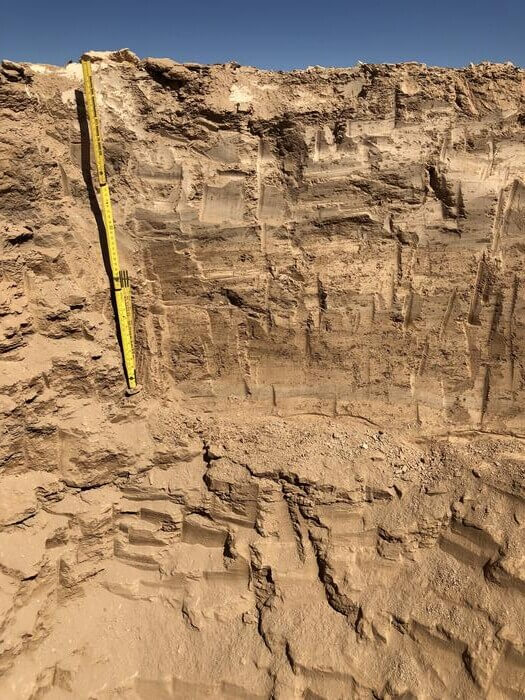
Study site, showing digging works and lab truck. (CREDIT: Lucas Horstmann, GFZ-Potsdam)
POTSDAM, Germany — One of the most lifeless places on Earth is actually hiding an underground biosphere teeming with microscopic life! Researchers have unearthed this amazing oasis under Chile's Atacama Desert. The findings not only change our view of life on Earth, but they might prove that there is still life under the soil of dead alien worlds like Mars!
Despite being renowned as the driest desert on Earth, with some regions going decades or even centuries without a drop of rain, researchers from Germany discovered hardy communities of microorganisms that have managed to carve out habitats deep below the desert floor. Down here, totally isolated from the surface world, microscopic life finds a way to eke out an existence against all odds.
Study author Dirk Wagner and the team from the GFZ German Research Centre for Geosciences explain that they detected signs of potentially viable microbial ecosystems as far as 13 feet underground. This remarkable discovery is upending our understanding of desert biodiversity, demonstrating that life can persist in even the most extreme subterranean environments on Earth.
To glimpse this underground world, the researchers pioneered an innovative DNA extraction technique to recover genetic material exclusively from cells with intact membranes — a telltale sign of living or dormant organisms. Conventional methods can easily pick up remnants from dead cells as well, muddying the waters.

Their findings, published in the journal PNAS Nexus, revealed two distinct microbial communities inhabiting different subsurface layers. In the upper couple of meters, microbes like salt-loving bacteria cling to existence in highly saline sediments once part of an ancient ephemeral lake or playa. Below that harsh zone, however, an unexpected resurgence of life emerges in older, deeper alluvial fan deposits.
According to Wagner, these deeper communities may have colonized this lower layer over three million years ago, only to then become entombed and essentially cut off from the surface world above. In such extreme isolation without any energy from the Sun, these subterranean microbes had to evolve astoundingly creative survival strategies.
Incredibly, the researchers found that certain mineral deposits - particularly gypsum crystals - seem to play a vital role in sustaining this underground oasis. By chemically transforming the gypsum into the mineral anhydrite, some microbial species can extract and metabolize precious water molecules trapped within the gypsum's structure, giving them just enough moisture to keep living.
Even more mind-boggling, many of the microbes identified rely on an obscure type of chemosynthetic metabolism that allows them to produce their own food from atmospheric gases like carbon dioxide and hydrogen rather than depending on sunlight or organic matter filtering down from the surface ecosystems above.
Study authors add that this discovery under the Atacama shifts how we view desert ecosystems, including those on other planets! Billions of years ago, Mars likely hosted environmental conditions similar to the Atacama, when liquid water still flowed on its surface. If microbial communities on our own planet can create isolated habitable pockets underground, perhaps similar subsurface refuges capable of sustaining dormant or even active Martian life may await human explorers on the Red Planet.










